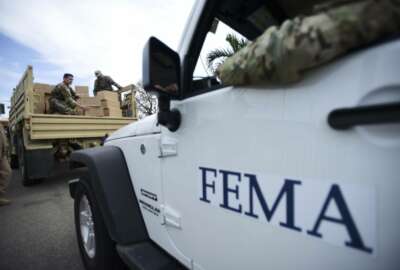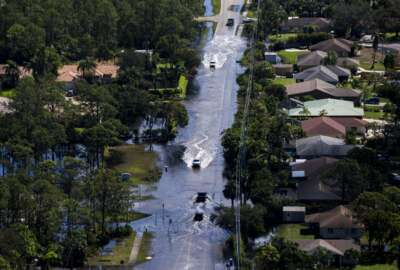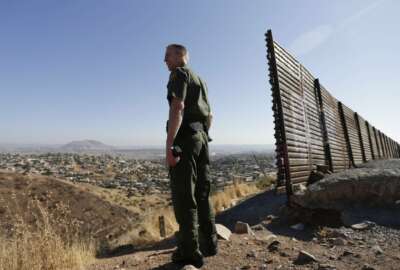
At least 550 DHS employees have filled temporary volunteer assignments along southern border
Several hundred employees from other components within the Department of Homeland Security have deployed to help Customs and Border Protection and Immigration and...
Several hundred employees from other components within the Department of Homeland Security have been temporarily detailed so far to help with the agency’s response along the U.S. southern border.
Specifically, 551 DHS employees have deployed as part of a relatively new volunteer program, which the department stood up this spring to assist Customs and Border Protection and Immigration and Customs Enforcement with their workload on the southern border.
2,128 DHS employees have applied to temporarily deploy with the DHS Volunteer Force as of July 16, a department spokeswoman told Federal News Network.
The department began soliciting volunteers earlier this spring with the goal of supplementing several specific CBP and ICE functions along the southern border, according to a July report from the DHS privacy office.
Volunteers have been asked to spend about 45 days on temporary assignment with the DHS Volunteer Force, the department said.
The department stood up this new volunteer force after the President’s February executive order, which declared a security and humanitarian crisis along the southern border and directed the departments of Defense, Homeland Security and Interior to take address and address the challenges.
Former DHS Secretary Kirstjen Nielsen in March issued a memo to all department joint task forces and component leaders, asking for help in finding and temporarily detailing volunteers to the southern border.
CBP, for example, needs DHS volunteers to transport people from remote locations to U.S. Border Patrol stations, ports of entry and immigration facilities. Volunteers are also conducting initial medical assessments, transporting individuals in need of hospital care, and preparing and distributing meals to individuals in custody.
ICE has been soliciting volunteers with more specialized expertise, including licensed physicians and nurses to evaluate and care for its detailed population. In addition, the agency has been searching for volunteer attorneys to “conduct immigration litigation and case support in exclusion, deportation and removal proceedings before the Justice Department’s Executive Office for Immigration Review,” according to the DHS privacy officer.
Five non-DHS employees have also applied to join the volunteer force, and no one has actively began work in the field at this point yet, the department’s spokeswoman said. One employee’s application is pending deployment and plans to work as an attorney.
DHS employees have been applying for the Volunteer Force through a departmental SharePoint site. Non-DHS employees have used USAJobs.gov to apply for the DHS Volunteer Force, according to the privacy officer.
Nielsen had asked the DHS Office of the Chief Human Capital Officer to develop an intra-agency working group with departmental stakeholders from HR, public affairs and the agency’s general counsel, as well as experts from CBP, ICE and FEMA, stand up the new volunteer program.
Together, the volunteer force coordination cell receives and reviews applications from DHS and non-DHS employees and places them in spots that best suit their expertise, experience and skills.
Volunteers attend an on-site orientation and training, which is typically specific to their deployment location and anticipated duties, the DHS spokeswoman said.
CBP has been waging an uphill battle for years to meet congressional staffing requirements, and DHS has been testing a variety of recruitment and retention tactics and incentives to improve its hiring prospects. Still, the department has said CBP and ICE aren’t equipped to deal with the volume of people entering the U.S.
DHS has stood up similar volunteer groups in the past.
The Post-Katrina Emergency Management Reform Act, for example, established the Surge Capacity Force back in 2006. The department’s secretary can activate a group of DHS and non-DHS employees when a catastrophic event exceeds the scope of FEMA’s disaster workforce.
The DHS Surge Capacity Force has been activated twice in its brief history, first during the aftermath of Hurricane Sandy in 2012, when 1,100 of the department’s employees deployed to New York and New Jersey.
The department activated the Surge Capacity Force for a second time in fall 2017, when hurricanes Harvey, Irma and Maria, as well as the California wildfires, overwhelmed the FEMA workforce. Acting DHS Secretary Elaine Duke at the time expanded the capacity force to include non-DHS employees.
Several thousand federal employees volunteered with the Surge Capacity Force that year, including 2,740 employees from eight DHS components and 1,300 additional employees from 34 different cabinet departments and federal agencies.
Federal employees can apply to be a member of the Surge Capacity Force at any time. When activated, most capacity force members help with FEMA acquisition, human resources, financial management and logistics and planning, as well as disaster survivor assistance and the agency’s National Processing Service Center.
Copyright © 2024 Federal News Network. All rights reserved. This website is not intended for users located within the European Economic Area.
Nicole Ogrysko is a reporter for Federal News Network focusing on the federal workforce and federal pay and benefits.
Follow @nogryskoWFED
Related Stories

Feds from all Cabinet agencies can now apply to help DHS with Harvey, Irma response




